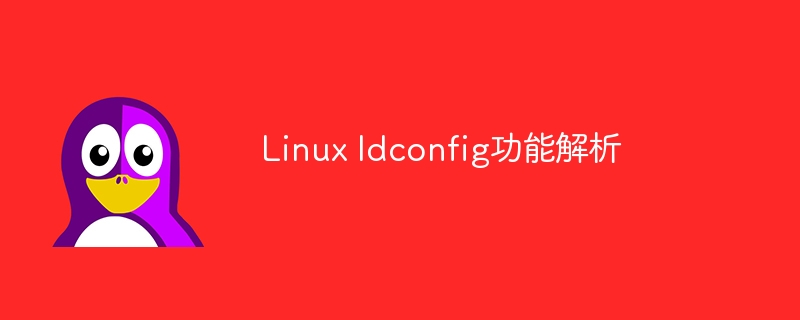

Linux ldconfig function analysis
In Linux systems, ldconfig is a utility for configuring the runtime linker. It is used to update the cache of shared libraries. and symbolic links to runtime libraries. By using the ldconfig command, users can easily manage shared libraries on the system to ensure that programs can correctly link to the required libraries and run normally.
ldconfig plays a very important role in the Linux system. It helps the system dynamically load shared libraries at runtime and improves the running efficiency of the software. In this article, we will analyze the functions of ldconfig in detail and how to use the ldconfig command correctly to manage shared libraries.
1. ldconfig command syntax
The syntax of the ldconfig command is very simple. The general format is as follows:
ldconfig [选项] [路径]
Options:
Path: The optional path parameter is used to specify the path to update the shared library cache.
2. Analysis of ldconfig function
One of the main functions of ldconfig is to update the system's shared library cache. When users install new shared library files or move existing shared library files to different paths, the system's shared library cache can be updated by running the ldconfig command so that the operating system can correctly locate these shared library files.
When the program needs to load a library file when running, the system will find the corresponding library file through the shared library cache maintained by ldconfig. ldconfig will traverse the path specified by the system, find shared library files that match dependencies, and establish symbolic links so that the program can correctly link to the required library files.
You can easily manage the paths of all shared library files in the system through the ldconfig command. Users can add, delete or update the path of shared library files through the ldconfig command to ensure that the system can correctly load and link these library files.
3. ldconfig Example Demonstration
Below we use an example to demonstrate how to use the ldconfig command to update the shared library cache:
Assume that we install a new one in the system Shared library file libtest.so and set its path to /usr/local/lib. Now we need to use the ldconfig command to update the system's shared library cache.
cp libtest.so /usr/local/lib
ldconfig /usr/local/lib
ldconfig -p | grep libtest.so
Through the above example, we successfully updated the system's shared library cache using the ldconfig command to ensure that the system can correctly Load and link the libtest.so shared library file.
4. Summary
In the Linux system, the ldconfig command is a very practical tool used to manage the system's shared library files. By using the ldconfig command correctly, users can ensure that the system can correctly load and link shared library files to ensure the normal operation of the program.
I hope this article will help you understand the function and use of ldconfig. I also hope that readers can flexibly use the ldconfig command in actual Linux system management to improve system stability and performance.
The above is the detailed content of Linux ldconfig function analysis. For more information, please follow other related articles on the PHP Chinese website!




